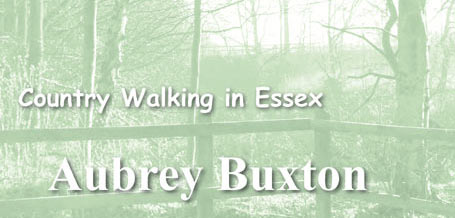Aubrey Buxton - Healthy Life Essex
Home » Articles » Outdoor Life » Countryside in Essex » Country Walking » Aubrey Buxton
Despite being close to the M11 and Stansted Airport, Essex Wildlife Trust’s Aubrey Buxton reserve and the surrounding farmland encompasses a wide variety of habitats from meadows rich in wildflowers such as Cowslip and Wild Strawberry to rolling landscapes with pleasant views and hedgerows laden with Hops and Traveller’s Joy. Sunken leafy lanes provide a shady environment of dappled sunlight which the Speckled Wood Butterfly inhabits.
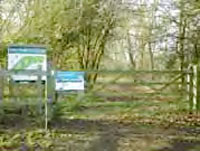 Aubrey Buxton Nature Reserve
Aubrey Buxton Nature Reserve
Although the walk route doesn’t pass directly through the reserve, you could take time at the start or end of your walk to explore this wild area. Why not eat your picnic in one of the sunny clearings? Originally the pleasure park to Norman House, this reserve is high woodland interspersed with grassland on a sandy/gravel soil. It has three man-made ponds, probably about 200 years old, and three further ponds dug in the 1950s when it was a wildlife park. It was donated to the Essex Wildlife Trust by Lord and the late Lady Buxton in 1976.
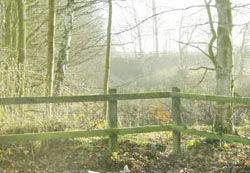 Cowslip, Wild Strawberry and Common Spotted Orchid grow in the meadows, along with the uncommon Lesser Lady’s Mantle and Adderstongue Fern. Hop Sedge, which is very localised in this part of Essex, grows around the ponds.
Cowslip, Wild Strawberry and Common Spotted Orchid grow in the meadows, along with the uncommon Lesser Lady’s Mantle and Adderstongue Fern. Hop Sedge, which is very localised in this part of Essex, grows around the ponds.
The many bird species include Nuthatch, Owls, Woodpeckers and a number of summer visitors. Twenty-two species of butterfly have been recorded and in good years numbers can be impressive. Many mature trees were lost in the storms of 1987 and 1990. This left Poplar trees very prone to storm damage and in 1991 many of these were felled. They are gradually being replaced with native trees, and notably a dozen Black Poplar native only to Britain. This species formerly played an important part in country life, being planted to give shade to cattle and to provide firewood and charcoal for the home.
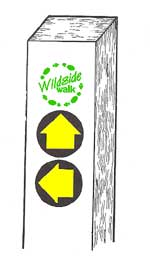 Walks are usually ‘Waymarked’, but be aware that some waymarks are now in dis-repair or even missing. They are found on special posts, stiles, gates and some fingerposts. The posts are usually painted white so that they can be seen from a distance (when needing to cross large fields etc this can be very useful. Tip: Binoculars can be handy to have when looking for the white posts.)
Walks are usually ‘Waymarked’, but be aware that some waymarks are now in dis-repair or even missing. They are found on special posts, stiles, gates and some fingerposts. The posts are usually painted white so that they can be seen from a distance (when needing to cross large fields etc this can be very useful. Tip: Binoculars can be handy to have when looking for the white posts.)
Wildside walk plaques are bright green and unique to Wildside walks in Essex.
Yellow ‘Directional Arrows’ usually on circular disks indicate the direction you should follow. (Path junctions are more complicated! Each arrow indicates an alternative route, so use the map to make your choice.)
Three different types of directional arrow are used:
Plain Yellow: used on ‘official’ public footpaths
Yellow Arrow with Courtesy Footpath: A small number of paths are not ‘official’ public rights of way. Most courtesy paths are in Nature Reserves and are generally provided courtesy of the landowner.
Plain Blue: Used on ‘official’ bridleways. Only found on the Bicknacre walk – look out for horses and cyclists.
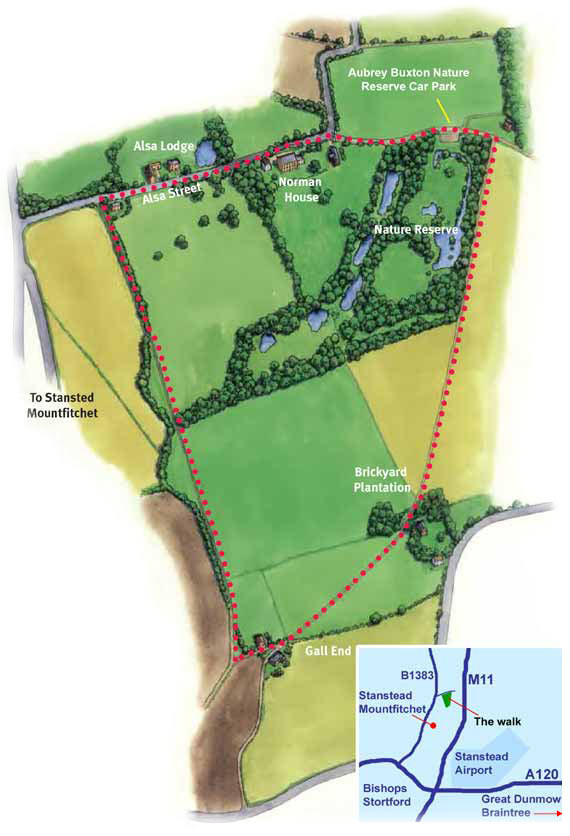
| Open a larger scale, printable copy of this map in Adobe pdf format |
Points of interest along the way
Lord Aubrey Buxton
Aubrey Buxton, the co-founder of Anglia Television was greatly influenced by an interest in wildlife. He established the local ‘Countryman’ series which went on to become the ‘Survival’  programme which took the viewer from the Galapagos Islands to Tibet. However, Aubrey retained an interest in local wildlife and the first programme of the Survival series was based in London. Due to his involvement with conservation organisations for 50 years and his chairmanship of ITN he became Lord Buxton. The Essex Wildlife Trust reserve has also been named after him.
programme which took the viewer from the Galapagos Islands to Tibet. However, Aubrey retained an interest in local wildlife and the first programme of the Survival series was based in London. Due to his involvement with conservation organisations for 50 years and his chairmanship of ITN he became Lord Buxton. The Essex Wildlife Trust reserve has also been named after him.
Stansted Mountfitchet
Stansted means ‘stony place’ in Saxon and predates the Norman invasion of England, although it wasn’t until the invasion that the suffix Mountfitchet was added from the Norman the area.
Very few remnants of the baron’s castle remain but the area boasts a reconstruction of an early Norman castle.
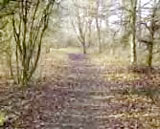 Coppiced Hazel
Coppiced Hazel
Along some of the footpaths you will see coppiced Hazel trees (all branches coming up from a central ‘stool’). The coppiced branches of Hazel are thin and easily twisted and are woven together to make hurdles, in a similar way to Willows.
Veteran Oaks
Veteran Oaks are defined by wildlife enthusiasts as ‘trees of interest biologically, aesthetically or culturally because of their age’. Ancient Oaks can be very important for fungi and dead wood invertebrates such as beetles. It is quite often tidied away when it would be more beneficial for biodiversity if it was left to rot on the ground.

Wild Hops
Masses of rough and shaggy Hop leaves can be seen in the hedgerows which run alongside the footpaths. Hops are a well known ingredient of beer, but the fibres are also used to make clothing and the young shoots can be cooked and eaten, a favourite dish of the Italians is ‘Hops and Tagliatelli’!.
|
Distance and time taken Going Transport Habitat types |
Ordnance Survey Map Parking Refreshments Dogs |
Photographs Courtesy of Public Rights of Way Dept, Essex County Council
![]() Produced in conjunction with Essex County Council
Produced in conjunction with Essex County Council
Maps reproduced by kind permission of
the Public Rights of Way Dept, Essex County Council
www.essexcc.gov.uk/prow

